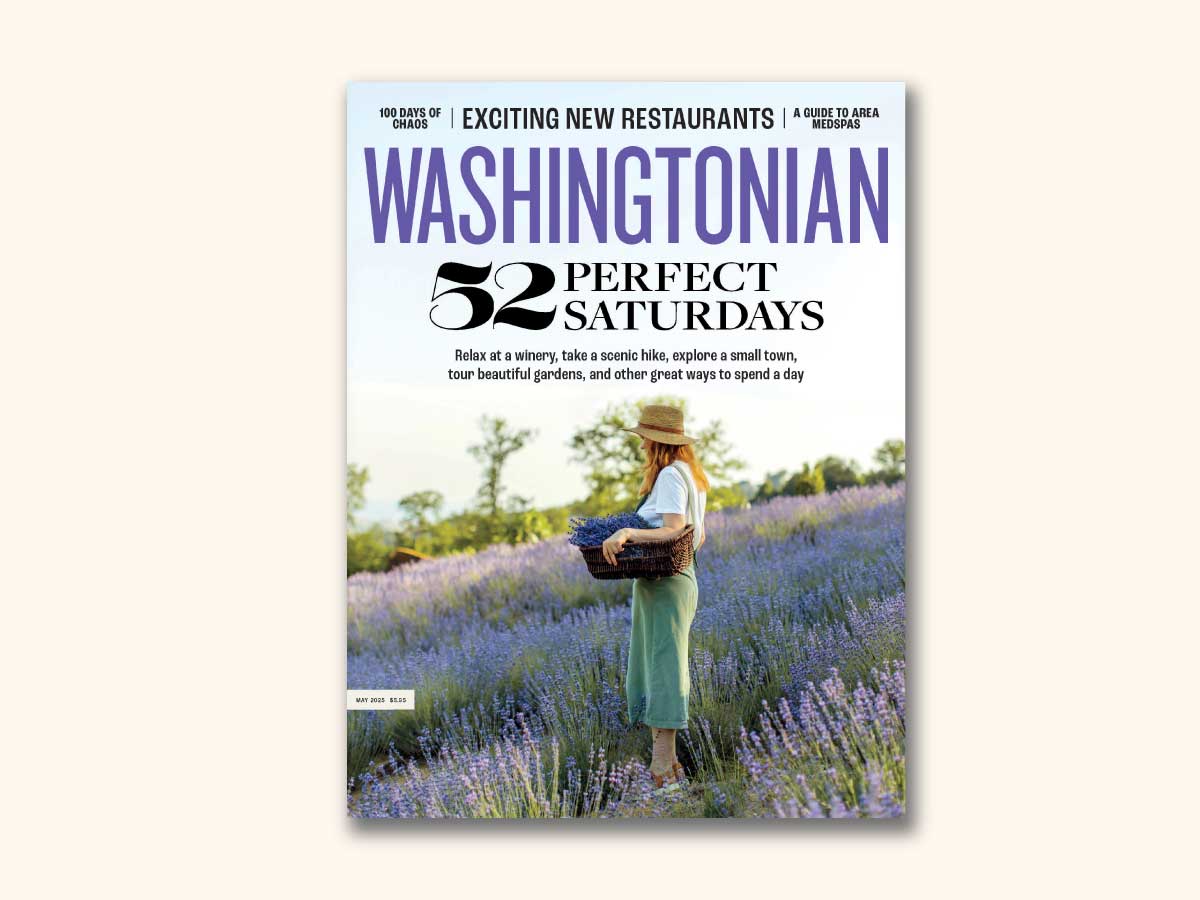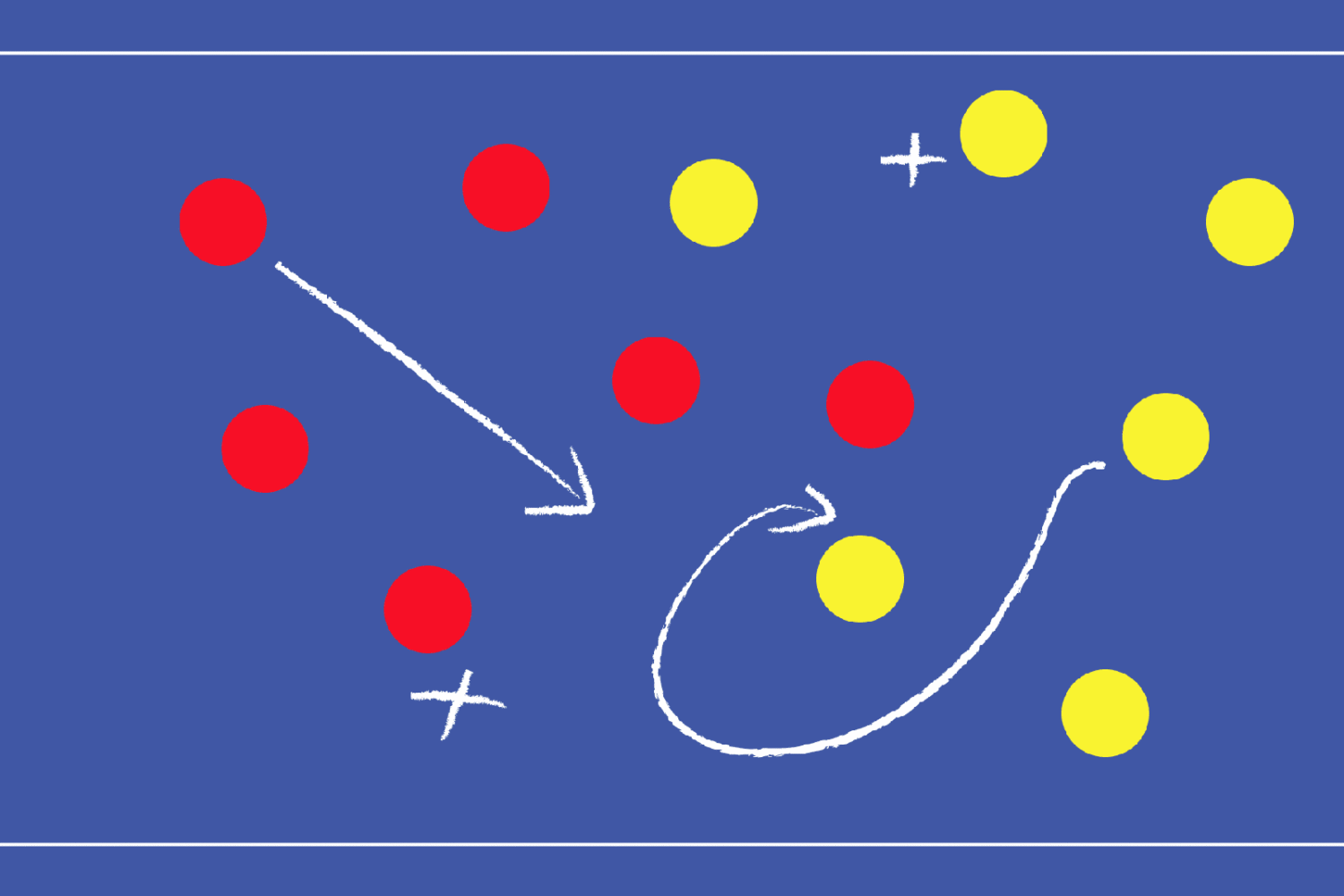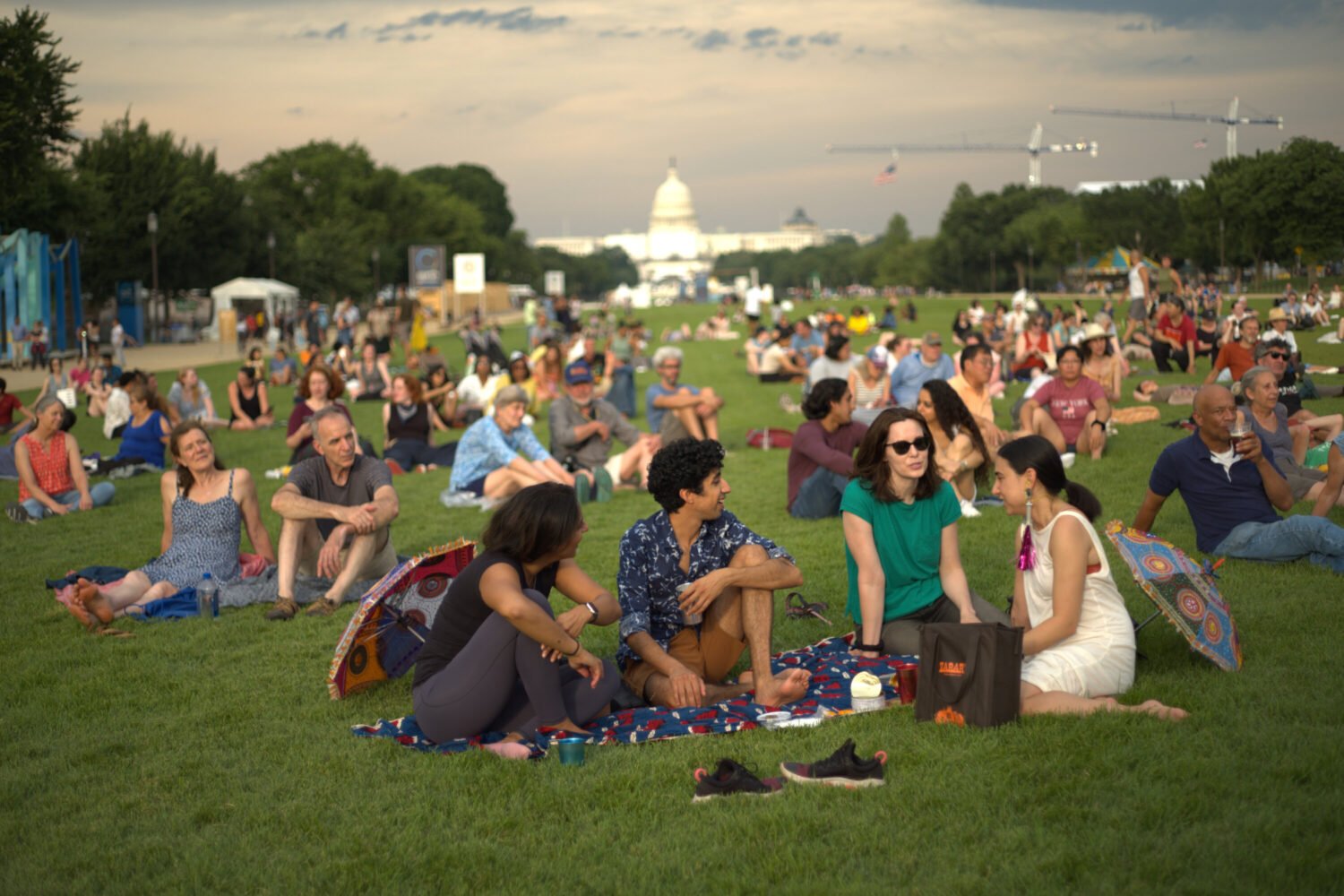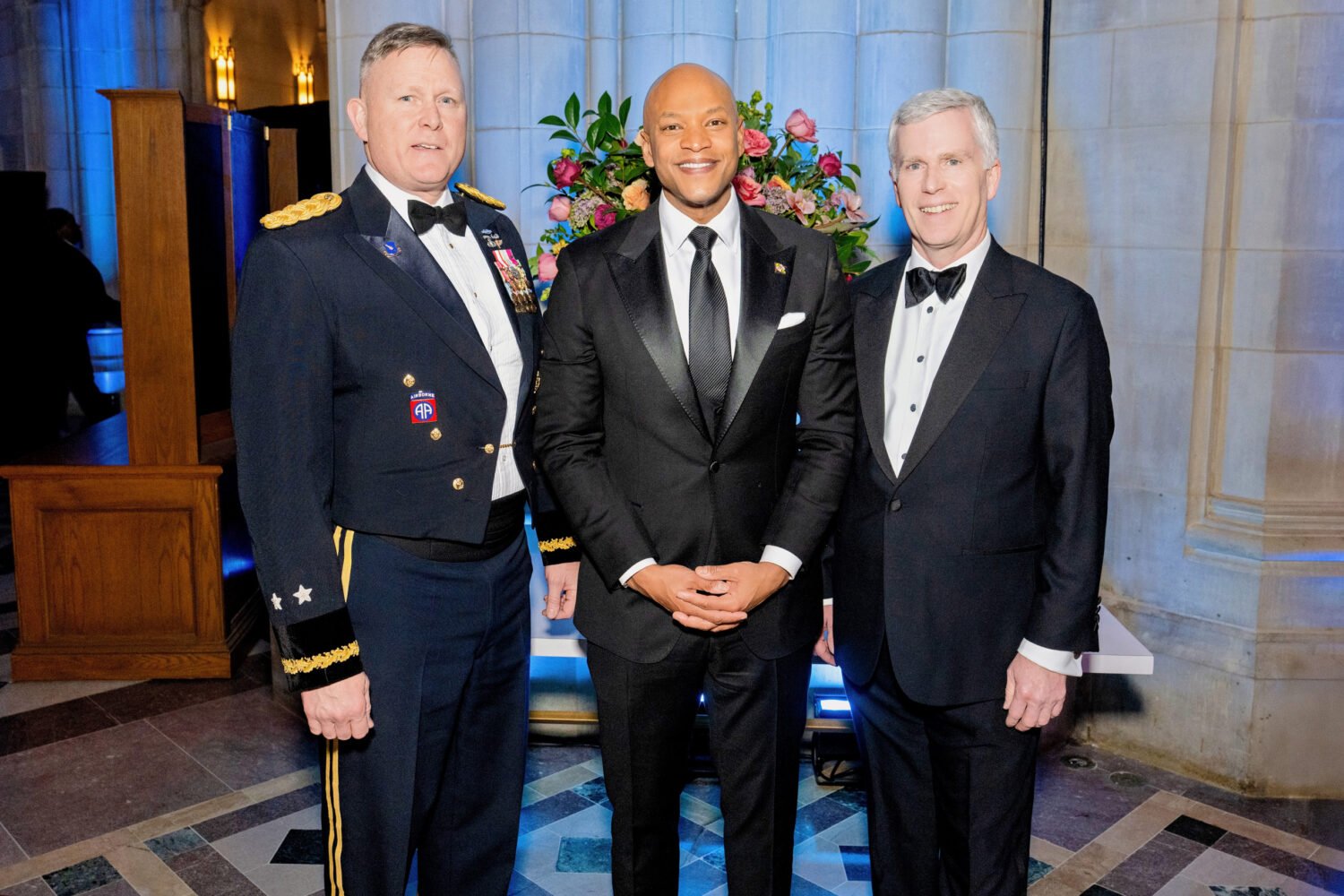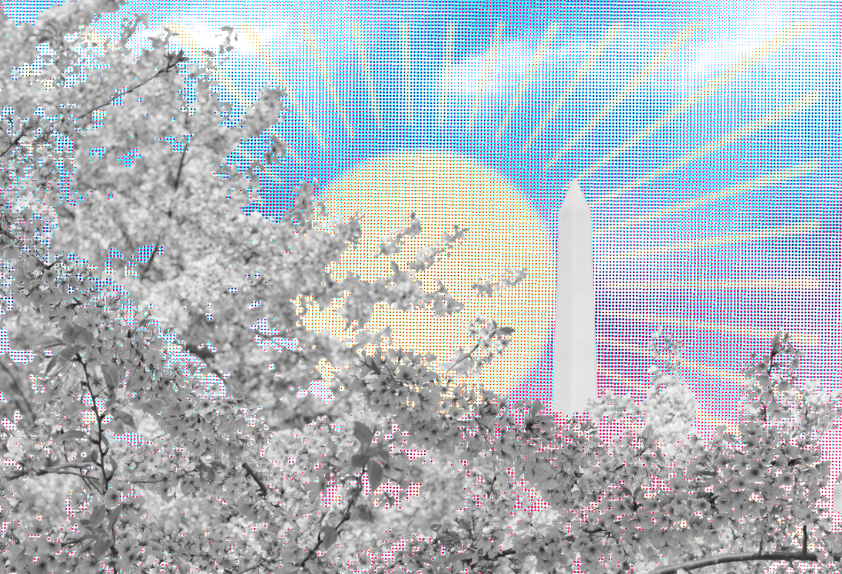Have you been waiting patiently for DC’s boundary stones to get their day in the sun, and by sun, I mean somehow serve as the inspiration for a National Basketball Association team’s alternate jersey? If so, then good news: your time has come! On Friday, the Washington Wizards will debut their new “city edition” uniforms, which celebrate, uh, a bunch of rocks that:
A) You’ve probably never heard of;
B) Are absolutely not one of, like, the top 50 things you’d associate with the city, even if you do, in fact, know what they are.
Look, I don’t mean to be a hater. There’s a fair amount to like about the Wizards’ new duds. They look pretty sharp, and their mix of disparate colors and elements—special shout out to the Old English Blackletter typeface for the words “The District”—gives them an appealingly chaotic energy. It’s also cool that they’re explicitly drawing on DC history, as opposed to Hogwarts Academy or installing Windows 95 or whatever else somehow inspired the team’s wildly locally incongruous nickname in the first place.
That said: our boundary stones? The chunky bois that in 1791 and 1792 were laid down to mark DC’s original borders? Really? The creative team behind the unis looked at DC’s rich history and iconography—the Capitol Dome, the Washington Monument, Dave Thomas Circle—and made some beat-up old rocks their first-round draft pick?
Shedding some light on the oldest monuments defining The District’s origins.
We’ll be bringing Boundary Stones to life through our 2023-24 City Edition Uniforms. #ForTheDistrict | @RobinhoodApp pic.twitter.com/er1joHsOXY
— Washington Wizards (@WashWizards) November 1, 2023
In fairness to the Wizards, this isn’t quite like the time that the franchise couldn’t even get a meeting with Kevin Durant and instead blew its precious cap space on Ian Mahinmi, Andrew Nicholson, and Jason Smith. Or the time it turned around and salary-dumped Nicholson’s contract at the cost of a first-round pick that became Jarett Allen, a future All-Star and better player than Mahinmi, Nicholson, and Smith combined. Or the time it passed on drafting Tyrese Haliburton, now an All-Star, in favor of Deni Avdija, now not an All-Star. Or the time it declined to kick off a roster rebuild by trading Bradley Beal for a king’s ransom of picks from the highest bidder, gave Beal the power to veto any trade, and then meekly dealt him to the only team he’d consider, the Phoenix Suns, for what amounted to a pu pu platter of second-round picks.
But I digress! Point is, the boundary stones are at least genuinely historically significant, coming from the 1790 Congressional act that allowed George Washington to form a new national capital. They also have an intriguing backstory: the team of surveyors who placed the stones included African-American mathematician and astronomer Benjamin Banneker, whose letter to Thomas Jefferson pointing out the enormous delta between the Declaration of Independence and American slavery failed to convince the founding father to, you know, give up having slaves.
As such, it’s not at all unreasonable for the Wizards to celebrate the boundary stones. But as far as historical muses go, it’s awfully esoteric—or, more charitably, awfully high concept, like asking David Lynch to direct a “Star Wars” movie. After all, there so many other, better-known, more prosaic inspirations to choose from: the aforementioned popular monuments, the White House, the Smithsonian, our many museums, Metro, the Pentagon, the Secret Service, beltway traffic, our departing pandas, Old Bay seasoning, mambo sauce brought to you by McDonald’s. Why not exhaust some of those first?
Moreover, it’s not like the Wizards don’t already know how to associate their brand with things that people commonly and readily associate with DC: their minor league team is called the Go-Go, and their city uniforms last season paid homage to our cherry blossoms.
The Cherry Blossoms can be seen all throughout the DMV and next season, for the first time ever, they’ll be seen on the hardwood.
Introducing our 2022-23 Bloom City Edition Uniform 🌸 pic.twitter.com/L1TFIcMT77
— Washington Wizards (@WashWizards) March 29, 2022
Again, I don’t mean to be a hater. Give the Wizards an A for effort, but something a lot further down the alphabet for execution. A good rule of thumb: if you have to put out a video explaining the actual history behind your new local sports uni, that history might be a bit too obscure for a local sports uni.







